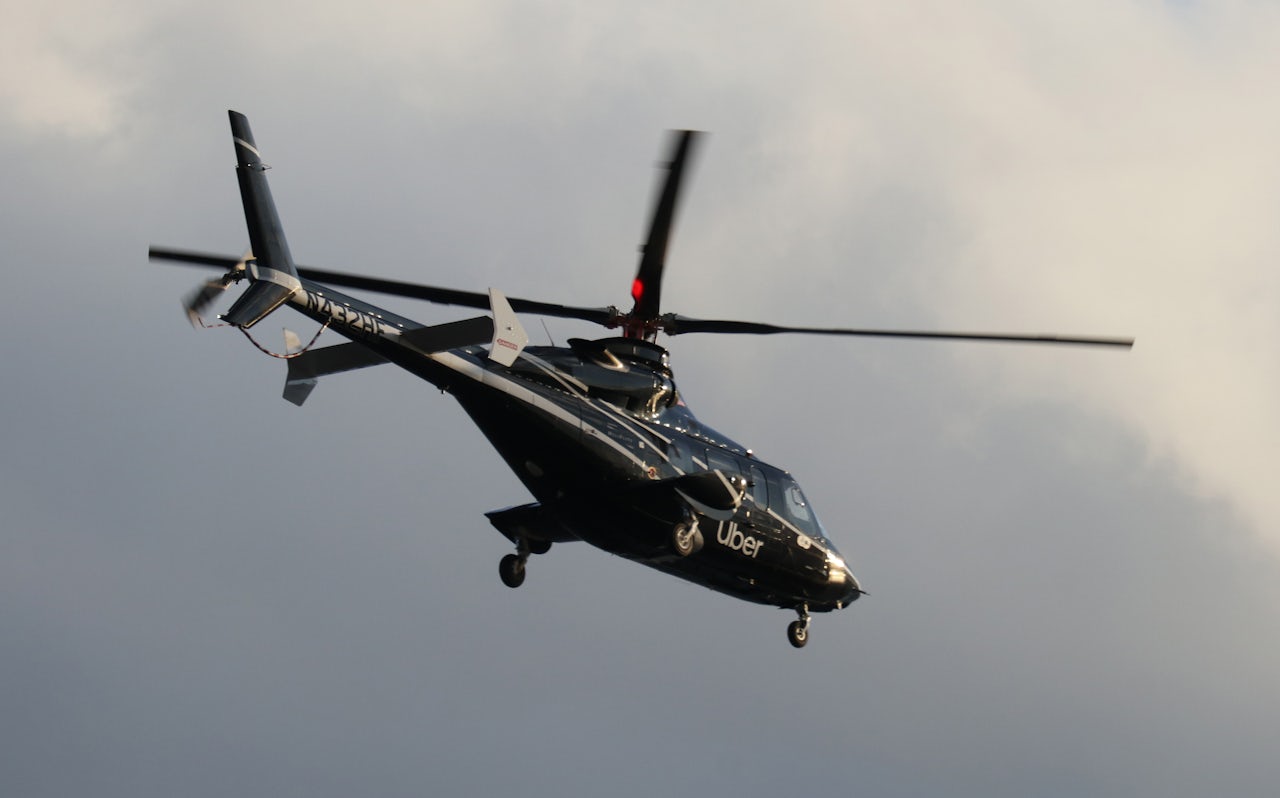One of the ways that a company can direct attention away from the reality of the present is to talk a lot about the technology of the future. If you’re Uber, for example, and it is 2016, and you are hemorrhaging money on your core business in nearly every market in which you operate, then it is perhaps a good time to start talking a lot about self-driving cars. In fact, you might even go so far as to promise, as the ride-sharing service did in 2016, something even better: flying cars.
Four years after Uber first introduced the idea, we now have a better idea of what itis actually doing in the skies. And it looks something like this:
WHY THE FUCK IS THE UBER HELICOPTER THE CHEAPEST OPTION pic.twitter.com/sfemdDsoC0
— nicole loves harry (@nicoleej0hnson) December 23, 2019
The screenshot above is real, and it shows Uber working almost exactly as designed. It was taken by Nicole Johnson, a 23-year-old retail worker who lives in Manhattan. Johnson told me in a Twitter direct message exchange that, as a chronic overpacker, she ended up using a very large suitcase for her Dec. 23 trip for the holidays, which would have made for a difficult trip on the subway. So she pulled up the Uber app to see what it would cost to get from her home to John F. Kennedy International Airport in Queens. And she saw, at approximately 2:45 p.m. on a Monday, that it was about a buck cheaper for her to take a helicopter to the airport than it was to ride in a carpool.
The Uber Copter program was launched in July for service from Manhattan to JFK. It was pitched on the principle of efficiency; “This is a trip that so many travelers make a day, and we see an opportunity to save them a huge amount of time on it,” the head of Uber Elevate (Uber’s “shit that flies” division), Eric Allison, told The New York Times at the time of the service’s launch. The company said that rides would cost an average of $200 to $225 a head — not including checked luggage, which costs $85 a bag — which is about what Uber Copter’s most well-known competitor, Blade, charges. But unlike Uber’s car service, a helicopter operated by, say, Schmecken LLC will not appear at your doorstep; Uber provides car service to a helipad near Whitehall Terminal in lower Manhattan. The flights run on a schedule and you can reserve a seat up to five days in advance. As to why the cost for a helicopter ride was less than one in a car, an Uber spokesperson told me in an emailed statement that Johnson’s screenshot depicted "a temporary promotion for the holidays, when travel to and from JFK is at its busiest.”
What was until recently branded as a luxury service (“Sparing No Expense for a Copter Ride to the Hamptons,” reads a 2012 Times headline) is now being marketed as a modestly upscale solution to a problem that Uber has helped create. Transportation analyst Bruce Schaller last year released research indicating that Uber, Lyft, similar services were responsible for a 160 percent increase in driving on American city streets between 2016 and 2017. This shift has been felt acutely in New York and in Manhattan most of all: the average speed of traffic in Midtown is 4.7 miles per hour, according to New York State’s “Fix NYC” government advisory panel.
One source of all this added traffic is the repair- and revenue-starved mass transit services, which are plagued with heavy delays that have prompted more people to take rides in Uber that they otherwise would not. The revenue that this sucks from the system has prompted fears of a “death spiral” for the Metropolitan Transportation Authority, giving it less money with which to do the critical work to improve its service.
For most people, the current situation is a lose-lose. You can spend two hours trying to get to the airport in a car from Manhattan, or you can pray that the trains are functional when you need them to be. More than any fantasy of a flying car flown by a robot, the real future looks more like Sao Paulo today: the super-rich darting from high-rise helipad to high-rise helipad, paying thousands of dollars an hour to dodge the traffic in one of the most congested cities in the world. It's probably worth noting here that Uber has operated helicopters before, in 2014, in Mumbai and Bangalore (also terribly traffic-choked cities).
By slashing the price of such a luxury offering right before Christmas, Uber was hoping to hook people who would spring for such a novelty at $100 but not $200, and who might like it enough to keep coming back. Though Uber Copter was initially positioned as a service for only members of the company’s Uber Rewards program, it was expanded to all users in the area in October. The fact that it showed up on Nicole Johnson’s phone suggests that they now want to reach a different kind of customer.
Johnson, for her part, was skeptical when asked if she could ever see herself taking a trip in an Uber helicopter. She ended up taking the subway to JFK ($7.75, total) instead of bringing $103 for a carpool ride.
“The fact that there even is an Uber helicopter and all these similar chartered/private helicopter services is just wild to me!” she told me over DM. “Like, to me it’s not worth the extra hundred-plus dollars to just... feel bougie??”
